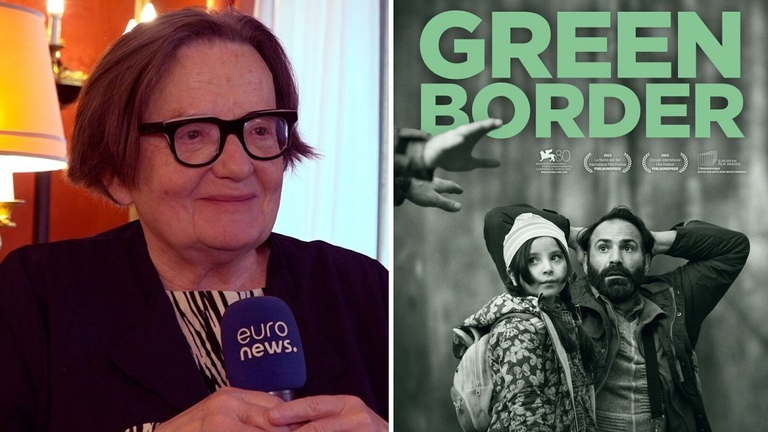Mastermind's review: Green Border
There are stretches of barren territory in Europe, real contemporary shrines driven by a flawed, if not repugnant, conception of the protection of rights. Together with us in one of these strips is Agnieszka Holland with her Green Border, representing that hell that once existed on the border between Poland and Belarus when the war in Ukraine began and the refugees from those war-torn areas violently rejected the others who came from other wars and other deaths and other hungers. In chapter after chapter, the horrifyingly agonizing movie Green Border tells the story of a family's escape from Syria along with other refugees they brought with them. It describes the cruelty of the army and border police, as well as death and the cold, but it also—and this is an important part of the story—addresses those who support refugees by way of the underground and carbonara network that risks its own life to rescue lives.
Agnieszka Holland creates an existential drama that is at times poignant and reveals the exposed nerves of political obligations that do not come by accident in a black and white that evokes the cold of the locales and the acidic flavor of the bogs in which people drown. A movie that has the potential to be a powerful critique of Europe's lethargic political system and, more importantly, of its own nation, which encourages rejection and cruelty.
Green Border is not an angry pamphlet; far from it. It is a record, a diary of unceasing effort, of an endless desire to express one's interpretation of the facts. It will undoubtedly be accused of facile didacticism or narrative simplism.
This kind of film, which finds its home in the fusion of fiction and reality found in those cold, black and white images, could reflect a lot. It would arrive in these very hard and difficult years, perhaps even beyond the reach of reportage, and show the pain that forms in that very place where all hope of survival drowns. Here is where we might ask if these concerns should be addressed in art or film by stepping into the realm of political vision.
The Polish filmmaker acknowledges this choice and says why: if we do not battle for those voices, if we do not struggle to raise essential, difficult, and perhaps unanswerable concerns, then there is no purpose in creating art. This is precisely what is happening along Poland's border with Belarus.
For these reasons, when we carefully tend to the bodies of its refugees marked as though by stigmata of redemption, Green Border compels us to pause and think after that immersion in reality. Humanitarian film that uncovers what we might know but are unable to see or understand—those stretches of land or water that are hidden from view by the prevailing themes in official discourse. The Polish director seems to be focusing on the theme while also paying close attention to the filmmaking apparatus that she is skilled at operating. She appears to be looking both into the lives of refugees and into Poland, which doesn't seem to have the same strong sense of solidarity that once defined its flag and revolution when it was the first nation to overthrow the dictatorship.
The failure of every human value and every community that enables us to acknowledge one another as members of the same species, regardless of boundaries, is addressed in that fuck you of the young people in the car to what's left of the Syrian family sitting on the sidewalk's edge.
Agnieszka Holland has once again shown us the immense power of images—even made-up ones—that are eerily close to and superimposable to reality by skillfully avoiding any simplism and any induction to easy feeling.
And that's exactly the real that we're talking about, so materialized in that pale and icy picture that the movie presents to us in its explicit radicality. This becomes a slippery slope that's easy to exploit because of the drama that the events in that simple game naturally have, which forbids any additional dramatization.
However, Green Border brings tales, pictures, and lives to life and finds its origins in those barren places, in those unofficial shrines where unseen tragedies occur and lives that have received no regard are snatched away. A terrible tale full of muted screams and unseen scenes exists on this gray, chilly border rather than the green one.
